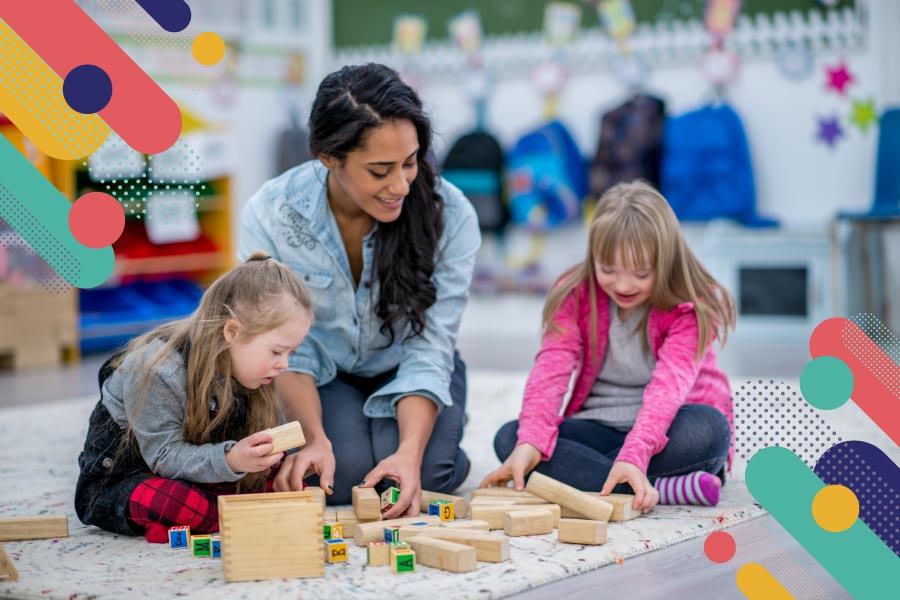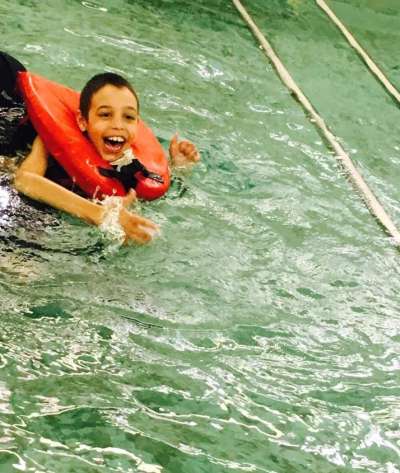Veteran teacher and TeacherVision Advisory Board Member Tina shares her tips for helping students with special needs reach their fullest potential.

When teachers hear the term special needs, the most common type of educational disability probably comes to mind: a learning disability. This term, however, includes a host of diagnoses that can affect students in very specific, albeit very different, ways.
A learning disability affects how kids process and comprehend information, and it can be expressed in a number of different ways. Students may demonstrate difficulty with spelling, writing, speaking, thinking, listening, or performing mathematical calculations.
As a teacher, it is impossible to be an expert about every single possible educational obstacle your students might encounter. Therefore, it is crucial that you take the necessary steps to help your students reach their fullest potential. Take a look at some of the strategies I have used in my classroom to help my students with special needs achieve success.
Read the Individualized Education Plan (IEP)
This one seems like a no-brainer, but many teachers overlook the obvious when there are just so many things to do. Reading a student’s IEP is a definite first step that should not become an oversight. The IEP provides so much helpful information that you can use to guide your instruction for that child.
Does it take time? Yes. But it is well worth the time and effort needed to tackle this often intimidating document.
If you truly cannot spare the time, at the very least become familiar with each student’s disability diagnosis, educational goals, and accommodations and modifications. Work in opportunities to practice any listed goals that fit naturally into different areas of the curriculum. For example, if a student’s IEP lists a goal related to using who, what, where, when, why, and how questions, see if you can create an assignment that focuses on using question words.
Understanding Accommodations and Modifications
Each student’s IEP will include an accommodations and modifications page. This will list the all the modifications and/or accommodations that a student needs to assist him or her in receiving a fair and appropriate public education.
Understanding what accommodations and modifications are, however, can be a bit confusing. Accommodations are changes in how information is taught to a student. Teachers can accommodate how information is presented to the student, how students are allowed to respond to assignments/assessments, the setting in which students learn or test, or the amount of time given to complete a task, just to name a few.
Accommodations allow students to follow the same curriculum and meet the same expectations as their peers. Modifications, on the other hand, modify, or change, what information is taught to a student. Both assignments and curriculum requirements can be modified to fit a student’s needs. This allows students to learn similar skills and concepts as their peers, but the materials to do so are modified to match the student’s ability level.
The accommodations or modifications for students are carefully selected by the IEP team to help students perform at their best ability levels. The goal is not to make schoolwork easier, but to “level the playing field” for students so they can receive a comparable education to their peers.
It is important to note that any teacher can provide accommodations or modifications for students if he or she sees a true need, even without an educational diagnosis.
Become Familiar with Common Difficulties
Each educational diagnosis comes with its own set of difficulties that your student may struggle with. It is vital to know what those difficulties are, but also become well versed in the best practices to tackle those obstacles with your student.
Students with dyslexia struggle with reading and understanding what they’ve read. This may be related to phonemic awareness (how sounds work in words), phonological processing (processing spoken and written language), or a number of other issues, such as fluency or spelling. Students with dyslexia often fall far behind in developing reading skills.
Dyscalculia describes students who have complications with mathematical calculations. These complications can range from ordering numbers and simple addition to transposing and omitting numbers from equations. This can lead students to make very slow or very small gains in mathematical reasoning and understanding.
Students with Attention Deficit/Hyperactivity Disorder, or ADHD, have trouble with focusing their attention, staying on task, and becoming distracted. Students with ADHD find many things in their environment interesting, so their attention is constantly being pulled away from what they are supposed to be focusing on.
Dysgraphia is also a common disability. Students with dysgraphia may have trouble with physically writing, such as not being able to hold a pencil properly. Dysgraphia is also diagnosed when students have difficulties with written expression, like an inability to organize thoughts, use grammatical structures properly, or understand basic sentence structure. This can cause difficulty in English language arts assignments, but also in many other core subjects as an increasing focus is being put on writing.
Many other educational diagnoses exist, and the above outlined just a few. If your particular student’s special need is not on this list, do a bit of research to find out all you can, so you can work to help your student learn and grow.
Provide Opportunities for Success
Having high expectations for your students is wonderful, but there are times that kiddos need a little help. Take a look at the list below. By adopting some of these suggestions, you might just be providing that little nudge that your student needs to get him or her to the top.
- Create a classroom environment that is as free of distractions as possible;
- Operate a very structured classroom, with some times reserved for unstructured activity;
- Show an example of appropriate classroom behaviors, as many students with special needs will not necessarily “just know” how to do things;
- Allow students to use an alternative seating arrangement, even if it’s simply letting students complete their work on the floor;
- Use music or timers to help with transitions throughout the classroom;
- Provide directions to assignments, activities, or assessments in a variety of ways, such as verbal and written;
- Break information up into smaller, more manageable tasks;
- Highlight, or give students permission to highlight, important information on assignments or in textbooks;
- Use alarms or apps to help students manage their time appropriately;
- Help students keep track of assignments by teaching them how to use a planner, organizer, or folders;
- Check often for understanding throughout the lesson or throughout the day and provide immediate redirection when needed;
- Differentiate your learning to include learners that excel in a variety of ways.
As an educator, you know how different each child can be. Get to know any students you have with special needs. Understand their abilities and their limits.
Have high expectations, but do not have unrealistic ones.
Our goal is to help each student reach his or her full potential, no matter what. It may be hard, it may take time, but in the end, isn’t it all worth it?
Do you have tips for working with special needs students? Share with us on Instagram, Facebook, Twitter, and Pinterest.
Tina Wheeler is an elementary teacher in a combined 3rd/4th grade classroom at a small private school in Cuba, Missouri. She has been an educator since 2005, working in both the general and special education classrooms with students ranging in ages from 3 years old to adulthood. When Tina is not teaching, she works as a freelance writer. She also shares teaching tips and tricks on her blog at Miss Tina’s Room.











